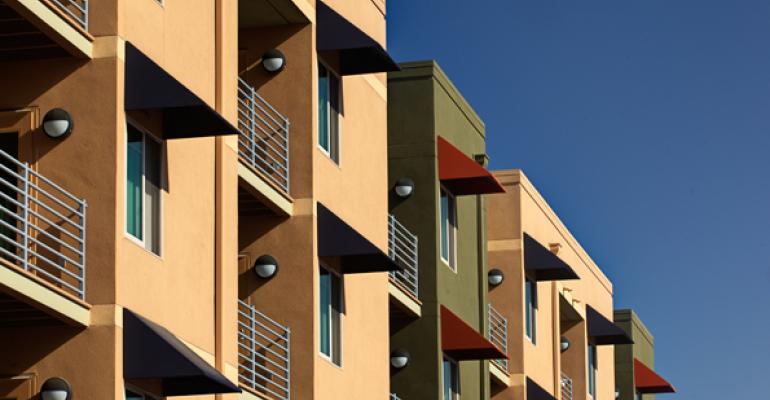Strong demand for apartments helped keep the percentage of vacant apartments low, even though developers finished many new apartments in 2014.
“We are getting to the point where net absorption and construction kind of level,” says Brad Doremus, an associate in the research and economics department at Reis Inc., a data firm based in New York City.
The percent of apartments that were vacant stayed at 4.2 percent in the fourth quarter in the top 79 markets tracked by Reis. That’s the same as the vacancy rate in the third quarter and it’s up slightly from 4.1 percent the year before.
That’s not bad, considering that developers were unusually busy in 2014. Apartment pros have worried for more than a year that the vacancy rate would rise as new apartments opened. The vacancy rate is expected to creep slowly upwards over the next few years—though the rate will stay lower than 5 percent, according to Reis.
Building binge for apartment developers
Developers finished 48,494 new apartments in the fourth quarter, adding up to a total of 161,518 new apartments in 2014, according to a tally of the top 79 apartment markets kept by Reis. That’s the most apartments completed in any year since 2001. It’s also high above the historical average of about 130,000 apartments completed a year from 1999 to 2007 in the 79 markets tracked by Reis. Reis had expected developers to finish even more new apartments, though a few projects were delayed and will now open in 2015.
Busy 2014 may just be the beginning—developers also started construction on a lot off new apartments in 2014, which won’t be finished for another year or two. The U.S. Census counted 340,000 multifamily starts in 2014—a large number, even for the Census, which counted an average of 300,000 apartments completed a year between 1996 and 2006 in the U.S. Reis expects the level of apartments finished to stay high in 2015 and 2016
Demand for apartments was very strong in 2014. The markets absorbed a net of about 161,000 units, slightly higher than the 160,000 units absorbed in 2013. “This is probably the last time for a while it will be this high,” says Doremus. Reis expect absorption to drop to 130,000 to 140,000 a year for the next few years. “That’s still higher than anything between 2000 and 2009… though I think we are past the peak of this exploding pent up demand,” says Doremus.”
Job growth and the sheer number of young people reaching the prime ages to rent apartments will keep demand from dropping further. “There seems to be less of an interest in jumping into home ownership at an earlier period in life,” says Mark Obrinski, chief economist for the National Multifamily Housing Council.
As a result, demand for apartments will be strong—but not quite as strong as the new supply coming online. That will continue to push the percentage of vacant apartments higher than the current rate of 4.2 percent, a little bit at a time.
“It’s definitely possible that the vacancy rate will creep into the mid- or upper-4-percent range,” says Doremus. “We don’t expect new construction to crater the occupancy rate.”

